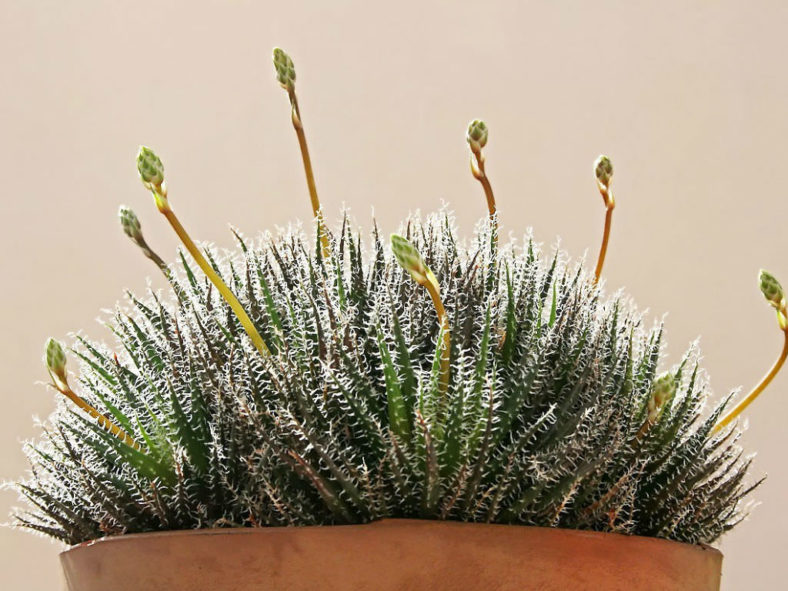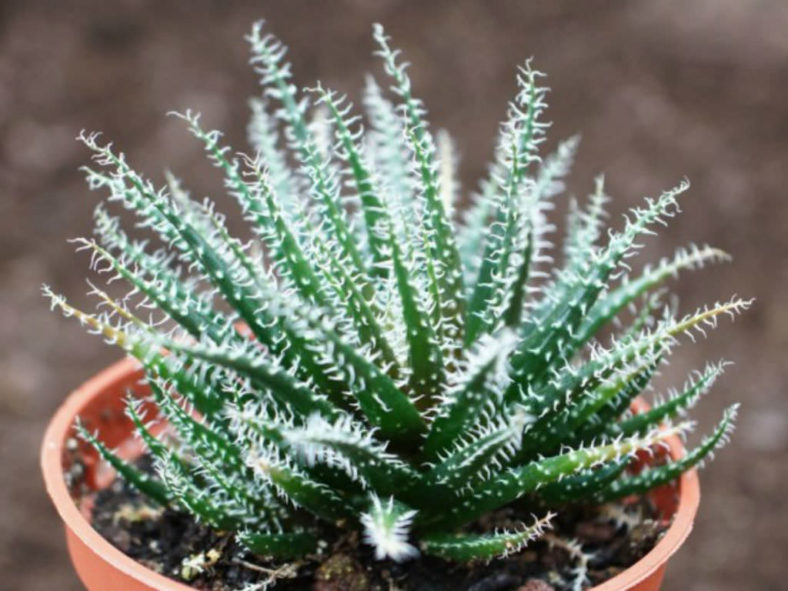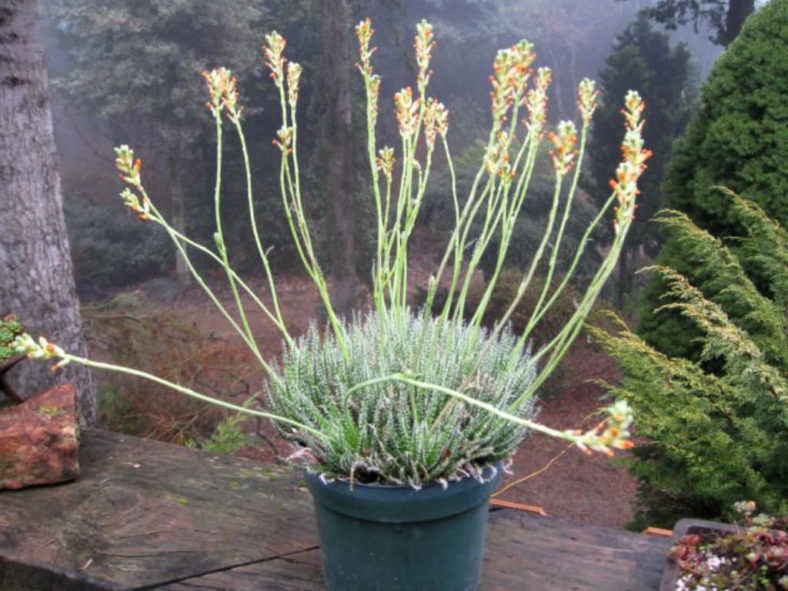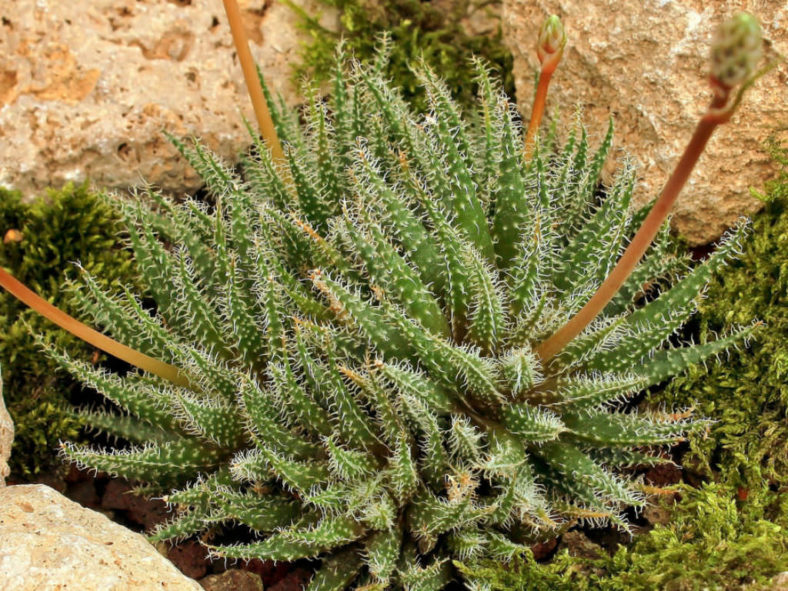Scientific Name
Aloe haworthioides Baker
Common Name(s)
Haworthia-leaved Aloe
Synonym(s)
Aloe haworthioides var. haworthioides, Aloinella haworthioides, Lemeea haworthioides
Scientific Classification
Family: Asphodelaceae
Subfamily: Asphodeloideae
Genus: Aloe
Etymology
The specific epithet "haworthioides (hay-worth-ee-OY-deez)" means "resembling Haworthia" and refers to the resemblance of this species to Haworthia species until it blooms with typical Aloe flowers.
Origin
Aloe haworthioides is native to Madagascar. It grows mainly in rock cracks in the Central Highlands.
Description
Aloe haworthioides is a small succulent that offsets freely to form a dense clump of rosettes of fleshy, dark green leaves covered with soft, white spines. The rosettes can reach up to 2 inches (5 cm) in diameter. The leaves are lance-shaped, measuring up to 1.6 inches (4 cm) in length and 0.3 inches (0.8 cm) in width.
The highly fragrant orange flowers are tubular and appear arranged on simple stalks in late summer and fall. The flower stalks can grow up to 12 inches (30 cm) tall.

Hardiness
USDA hardiness zone 9b to 11b: from 25 °F (−3.9 °C) to 50 °F (+10 °C).
How to Grow and Care
Aloes are very forgiving plants. However, as with all succulents, Aloe must never be allowed to sit in stagnant water, and the plant should be carefully monitored to watch for signs of overwatering.
These succulents are not particularly fast-growing and will only rarely need repotting. However, in the spring, repot Aloes tipping over their pots or have ceased growing. Use a fast-draining potting mix with one-third of sand or pebbles. When repotting a larger plant, dividing the root ball is possible. Some varieties of Aloe will send off offsets that can be potted independently.
Aloe plants need strong, bright light. They can withstand full summer sun once acclimated. In the winter, provide bright light. It prefers warmer temperatures of 70 to 80 °F (21 to 27 °C) but will survive down to 40 °F (4.5 °C). Feed with a succulent fertilizer in the summer only. Suspend feeding in the winter as the plant goes dormant.
See more at How to Grow and Care for Aloe.
Hybrids
Links
- Back to genus Aloe
- Succupedia: Browse succulents by Scientific Name, Common Name, Genus, Family, USDA Hardiness Zone, Origin, or cacti by Genus
Photo Gallery
Click on a photo to see a larger version.



